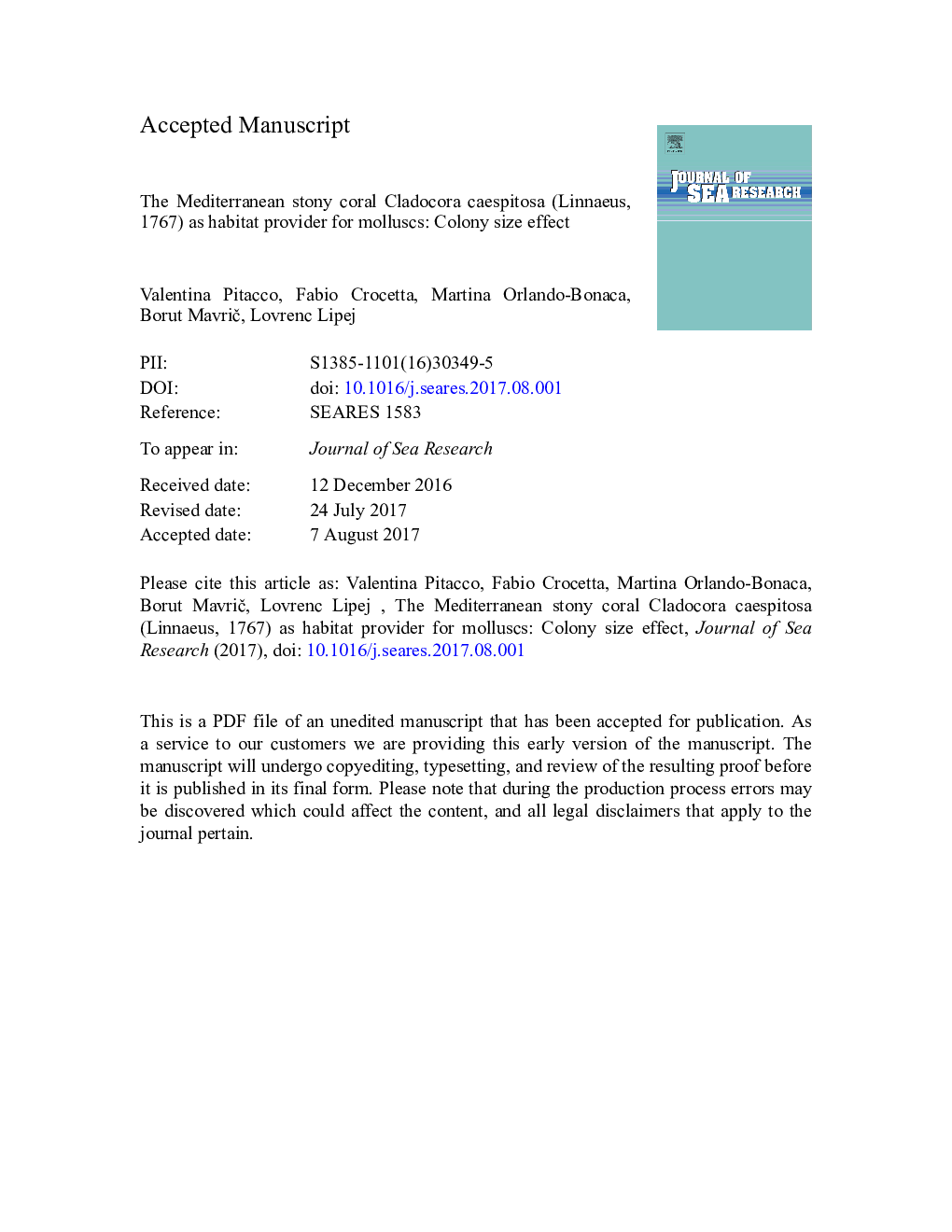| Article ID | Journal | Published Year | Pages | File Type |
|---|---|---|---|---|
| 5766012 | Journal of Sea Research | 2017 | 38 Pages |
Abstract
The stony coral Cladocora caespitosa (Linnaeus, 1767) is an important Mediterranean habitat builder, whose survival is now being threatened by human activities and possibly natural events such as mass mortality and bleaching. We characterized the mollusc assemblage associated with colonies in the Gulf of Trieste (northern Adriatic Sea) and then tested whether the number of mollusc species increases in relation with colony size, following a Species-Area Relationship (SAR) model. At least 62 taxa were found in association with coral colonies, with bivalves constituting the dominant group. More than half of the 3034 specimens encountered were juveniles. Mollusc taxa richness increased with increasing C. caespitosa colony size according to the power-function model, whilst the analyses of trophic and functional groups supports the hypothesis of at least two factors underlying SAR (area per se and habitat diversity). Our results confirmed the importance of C. caespitosa for benthic communities, indicating that larger colonies support higher biodiversity, and suggesting that C. caespitosa is the most important habit builder among Mediterranean cnidarians, having also an influential function as a natural nursery ground. These results underline the necessity of new investigations aimed at filling gaps in our knowledge and planning new measures to protect the species.
Related Topics
Physical Sciences and Engineering
Earth and Planetary Sciences
Oceanography
Authors
Valentina Pitacco, Fabio Crocetta, Martina Orlando-Bonaca, Borut MavriÄ, Lovrenc Lipej,
